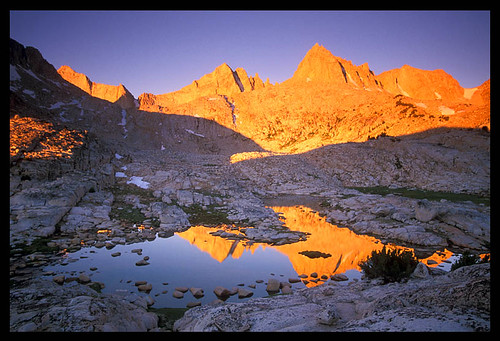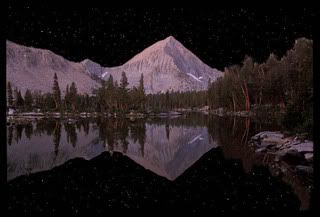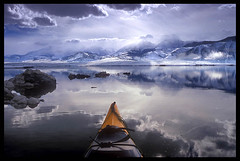I vote that we all pay Galen our respects and kindly move on to a different esthetic in the work, one that while less accessible is perhaps less prone to schlock...).
Ahhhh... I respectfully mucho disagree-o! Galen Rowell is freakin' AWESOME and his images are el fantastico! I peruse Galen's gallery in Bishop with my jaw dragging on the ground. It's all a matter of taste, obviously, but there's a reason Fuji Velvia 50 film was the gold standard of landscape film (still is for film shooting landscapers).
If you take 20 different digital cameras programmed at the factory and take the same pics, you'll get 20 different renditions of the image, straight out of the camera. Which one is 'true'? None of them. The camera IS a processor. There are settings for sharpness, contrast, saturation, file size, different lens focal lengths which tweak perspective, etc. All these factors have to be determined by someone. Same with video cameras (each mfg has a certain look to their footage/images). Also the exposure makes a big difference in an image... under exposed or over exposed, in camera, looks different. Which reflects reality? What/who determines a perfectly 'exposed' photo? A washed out digital image 'straight' from the camera is not more true than a carefully processed RAW file.
A camera sees differently than the human eye, the lattitude and dymanic range aren't anywhere near the same. If you take a picture during a bright day in the forest, does it reflect "reality" to see 'black' shadows from trees that you could easily see detail with your eye? Does a washed out sky at sunset relfect reality because that's how your camera shot it? If you expose for the lighter sky, does the horribly dark foreground reflect reality, even though in 'real life' it wasn't so?
The "straight from the camera" proponents are either not aware of how different cameras process images, or willing to live with the limits of the specific camera in hand regardless of how they capture reality. Most 'straight from the camera only" propoents have bright daytime shots and few 'magic hour' shots, because magic hour is very difficult for a camera to capture and retain 'reality' due to the big differential in lighting and color. Galen Rowell used GND filters to "balance" light to be more in line with what the human eye sees in real life, so you could get that beautiful sunset properly exposed AND the remaining landscape properly exposed. That can't be done in camera with one shot, the physics and limitations of film or a digital sensor won't allow it. Rich, deep colors come from properly balanced light and usually during magic hour times. Of course Photoshop and HDR can be way overdone, but there's a difference between "in camera" and properly adjusting a photo. You should see some of my Velvia 50 slides, I actually have to desaturate some scans the colors on the slides are so rich. Right time, right place, right filters = Galen Rowell = sweetness. The aesthetic type of photography is of course subjective, but the physics/limitations of 'in camera' is science and IS manipulation and does have huge limits on capturing 'reality'. I find 'in camera only' shots to be my least realistic because of these limitations.
But that said... it's all good!





